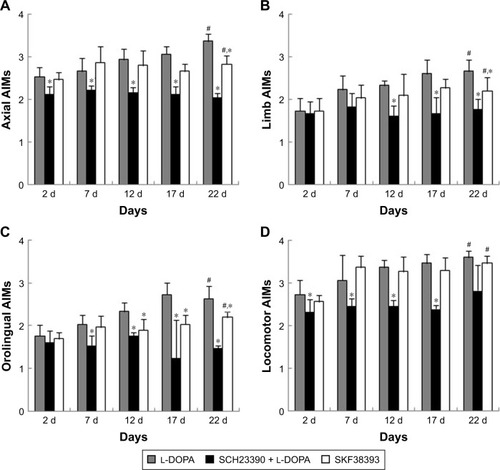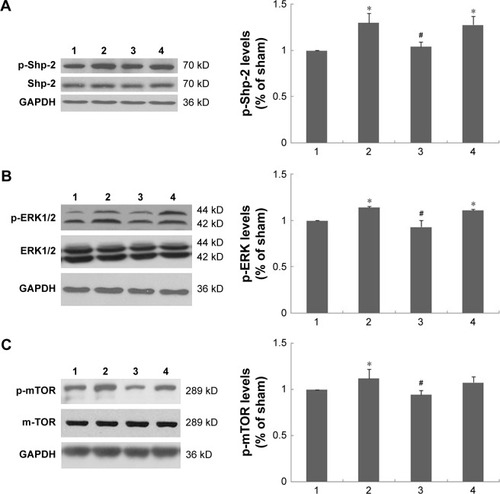Figures & data
Figure 1 Diminished expression of TH in substantia nigra in PD and LID rats.
Abbreviations: LID, levodopa-induced dyskinesia; PD, Parkinson’s disease; TH, tyrosine hydroxylase.

Figure 2 PD rats show different AIMs scores after the administration of l-DOPA, D1R antagonist or agonist.
Abbreviations: AIMs, abnormal involuntary movements; ANOVA, analysis of variance; d, days; D1R, D1 dopamine receptor; l-DOPA, L-3,4-dihydroxyphenylalanine; PD, Parkinson’s disease.

Figure 3 D1R interacts with Shp-2 in the striatal neurons.
Abbreviations: IP, immunoprecipitation; D1R, D1 dopamine receptor; L1, lane 1; L2, lane 2; L3, lane 3; L4, lane 4; L5, lane 5; LID, levodopa-induced dyskinesia.

Figure 4 Molecular events underlying LID involving D1R/Shp-2 complex and its downstream signaling factors, such as ERK1/2 and mTOR.
Abbreviations: ANOVA, analysis of variance; D1R, D1 dopamine receptor; ERK1/2, extracellular signal-regulated kinases 1 and 2; l-DOPA, l-3,4-dihydroxyphenylalanine; LID, levodopa-induced dyskinesia.

